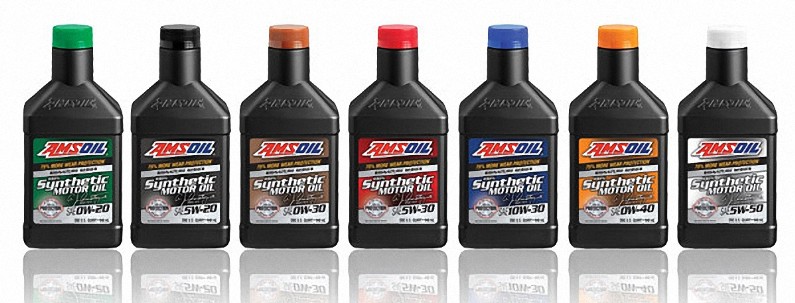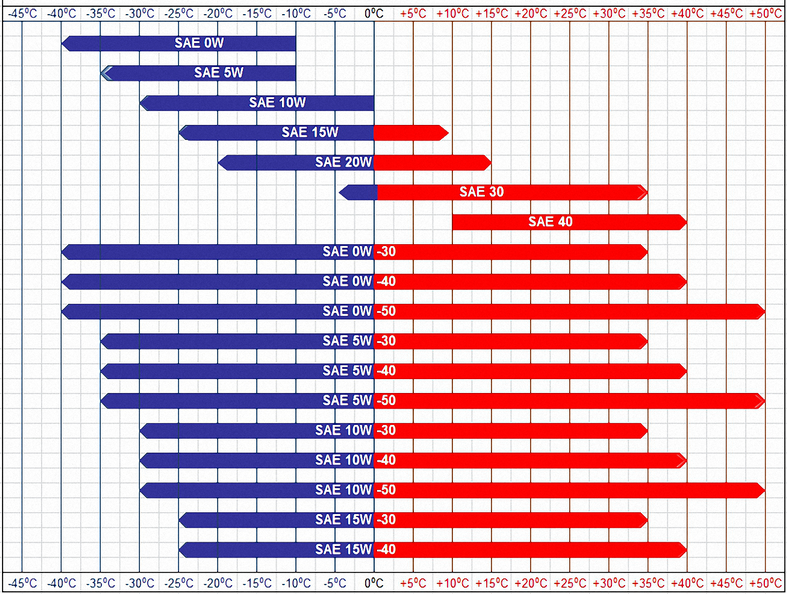Which Oil Viscosity Grade Should I Use In My Vehicle? - Select Synthetics - AMSOIL Authorized Dealer



Main menu:
- Home Page
-
Products
-
AMSOIL Products
- Shop by Product
- Shop by Equipment
- Shop by Category
-
Product Lookup Guides
- Product Lookup Guides - Home
- Filter Lookup Guides
- Auto & Light Truck Lookup Guide
- Motorcycle & Dirt Bike Lookup Guide
- Harley-Davidson Products Guide
- All-Terrain Vehicle Lookup Guide
- Utility Terrain Vehicle Lookup Guide
- Snowmobile Lookup Guide
- Marine Outboard Lookup Guide
- Personal Watercraft Lookup Guide
- Small Engine Lookup Guide
- Free Product Catalog
- AMSOIL - The Blog
- AMSOIL YouTube Videos
- AMSOIL Performance Tests
- The AMSOIL Newsstand
- AMSOIL Testimonials
- AMSOIL Guarantee
- Safety Data Sheets
- Oil Analysis Services
- Shipping & Product Return
- Safe & Secure Shopping
-
AMSOIL Products
- About AMSOIL
-
Oil Basics
- What Is Motor Oil?
- What Is Oil Viscosity?
- What Does Motor Oil Do?
- Why Does Oil Need To Be Changed?
- How Often Should I Change My Oil?
- When Should I Do My 1st Oil Change?
- Can I Mix Different Oils?
- Lubrication Regimes
- Newtonian vs. Non-Newtonian
- Base Oil Groups
- Motor Oil Specifications
- Service Classifications & Grades
- Oil Evaluation Tests
- Oil Filtration
- What is Oil Analysis?
- Why Synthetics?
- Buy Wholesale
- FAQs
- Contact Us
Oil Basics > What Is Oil Viscosity?


What Is Oil Viscosity? – Part 3
Which Oil Viscosity Grade Should I Use In My Vehicle?
All vehicle manufacturers today recommend the use of 'multi-grade' motor oils. To find out which SAE multi-grade oil is recommended for your particular vehicle, you should consult your Owner's Manual. The recommended oil grade will also usually be printed on the Oil Filler Cap. Now the manual might list only one grade of oil for use in all temperature ranges, or it might list a few different grades of oil to choose from based on ambient temperatures.


For example, the Owner's Manual for my 2014 Sorento EX (3.3L non-turbo V-6) states: "For better fuel economy, it is recommended to use the engine oil of a viscosity grade SAE 5W-30 [although 5W-20 would actually be better for fuel economy] API SM/ILSAC GF-4 [API SN PLUS/ILSAC GF-5 are now the latest specs]. However, if the engine oil is not available in your country, select the proper engine oil using the engine oil viscosity chart." The 'viscosity chart' lists two other acceptable multi-grades (SAE 5W-20 and SAE 5W-40).
Now because these are the viscosity grades KIA recommends, does this mean that they are the only multi-grades that can be used in my Sorento's engine? Well, not exactly.
In my KIA Sorento, I currently use SAE 0W-20 oil in the winter and SAE 0W-30 oil in the summer (although I could use either viscosity year-round). Note that I do live in Northern Ontario, Canada - it does sometimes get very cold up here in the winter (below -40°C) - thus the 0W-20 grade for winter.
As mentioned in my previous article, "Oil Viscosity Grades", the viscosity grade numbers (i.e. the '5W' and the '30' in a SAE 5W-30 oil) are simply a rating representing the "viscosity range" of the oil. They are NOT the actual viscosity of the oil. The viscosity of an oil is temperature dependent - a particular grade of oil will have a different viscosity/thickness at different temperatures.
For a SAE 5W-30 multi-grade oil, the first number (5W) is the 'cold' viscosity rating of the oil, the 'W' stands for winter, and the last number (30) is the 'hot' viscosity rating of the oil. Therefore, when the oil is cold (e.g. in sub-zero temperatures) it has a rating of '5W'. When the oil is hot (e.g. circulating in a hot engine) it has a rating of '30'.
What this means is that a 0W-30, a 5W-30, and a 10W-30 multi-grade oil will all have essentially the same viscosity (thickness) when circulating in a hot engine (about 10 cSt at 100°C) but will have a completely different viscosity when cold. It is the second number (30) that will determine the thickness of the oil at operating temperatures.
In other words, all three grades will offer the exact same protection when your engine is at "operating temperature", but the grades with a lower 'xW' number will flow better when the engine is cold. Because a 0W-xx multi-grade remains more 'fluid' in colder temperatures than a 5W-xx, having a much lower 'Cold Cranking Viscosity' and 'Cold Pumping Viscosity', the oil will get up into the engine more quickly upon start-up, therefore minimizing engine start-up wear. It will also reach the proper 'hot' viscosity faster, further minimizing wear.
Looking at it another way, a 5W-30 multi-grade and a 0W-30 multi-grade will both have the same 'thin' viscosity when circulating in a hot engine, but as the engine cools down, the 5W rated oil will 'thicken' a lot more, and a lot faster, than the 0W rated oil.
It's also important to understand that at "ambient temperatures" (even HIGH ambient temps), ALL grades of oil are too thick/viscous (yes, even a 0W grade is too thick). In other words, a 0W grade is thicker at ambient temps than a 30 grade is at operating temps. It is only after the engine warms up, heating up the oil, that the oil reaches its proper 'hot' viscosity.
It is said that over 75% of engine wear occurs at start-up when the engine is cold (and in the 10-20 minutes after start-up while the engine is warming-up). Extended idling (e.g. warming up your vehicle in the winter) will also accelerate wear. Therefore, if you are interested in engine longevity, you should focus on reducing and minimizing this start-up wear. And the best way to accomplish this is by choosing a multi-grade oil with a lower 'cold' viscosity number that will flow better and get up faster into the engine.
(I strongly recommend the use of an Engine Block Heater in sub-zero temps. The faster the engine and oil get to operating temperature, the better.)
Below is an example of the temperature range of different oil grades

Note: The chart above doesn't show a SAE 0W-20 or 5W-20 grade, however, based on this chart, the temperature range of a 0W-20 multi-grade would be "-40°C to +30°C" and a 5W-20 would be "-35°C to +30°C".
Therefore, the question as to which oil viscosity grade can or should be used in your vehicle’s engine will depend, among other things, on the type of climate you will be driving in - if you live in a very hot climate you could, if you wanted to, use a higher viscosity grade oil (10W-40 for instance), and if you live in a much colder climate you could choose a lower viscosity grade oil (0W-20 for instance). However, the recommended viscosity grades should do just fine in all climates.


Home Page | Products | About AMSOIL | Oil Basics | Buy Wholesale | FAQs | Contact Us | General Site Map